COMMENT OF THE DAY: THE GREAT MONTROSE PUBLIC TRANSPORTATION ROUTE THINNING  “The Fairview bus route replaced the streetcar line and operated for decades. Thirty years ago a significant number of people in Montrose relied on public transportation. As demographics changed, METRO decided that ridership didn’t justify some routes through Montrose. In addition to Fairview, they also eliminated the University (Hawthorne) and Alabama (actually W. Alabama) routes. It’s surprising how much of a difference there is between walking one or two blocks vs. five or more to the closest bus stop. I agree that a revived Fairview line would be convenient, and a trolley would be great. The question is, will residents of $500k townhomes willingly commit to giving up their cars? I wish they would, and think they won’t.” [Big Tex, commenting on Houston’s Vanished and Current Middle-of-the-Road Rail Networks, Close Up and Personal] Illustration: Lulu
“The Fairview bus route replaced the streetcar line and operated for decades. Thirty years ago a significant number of people in Montrose relied on public transportation. As demographics changed, METRO decided that ridership didn’t justify some routes through Montrose. In addition to Fairview, they also eliminated the University (Hawthorne) and Alabama (actually W. Alabama) routes. It’s surprising how much of a difference there is between walking one or two blocks vs. five or more to the closest bus stop. I agree that a revived Fairview line would be convenient, and a trolley would be great. The question is, will residents of $500k townhomes willingly commit to giving up their cars? I wish they would, and think they won’t.” [Big Tex, commenting on Houston’s Vanished and Current Middle-of-the-Road Rail Networks, Close Up and Personal] Illustration: Lulu
Tag: Houston History
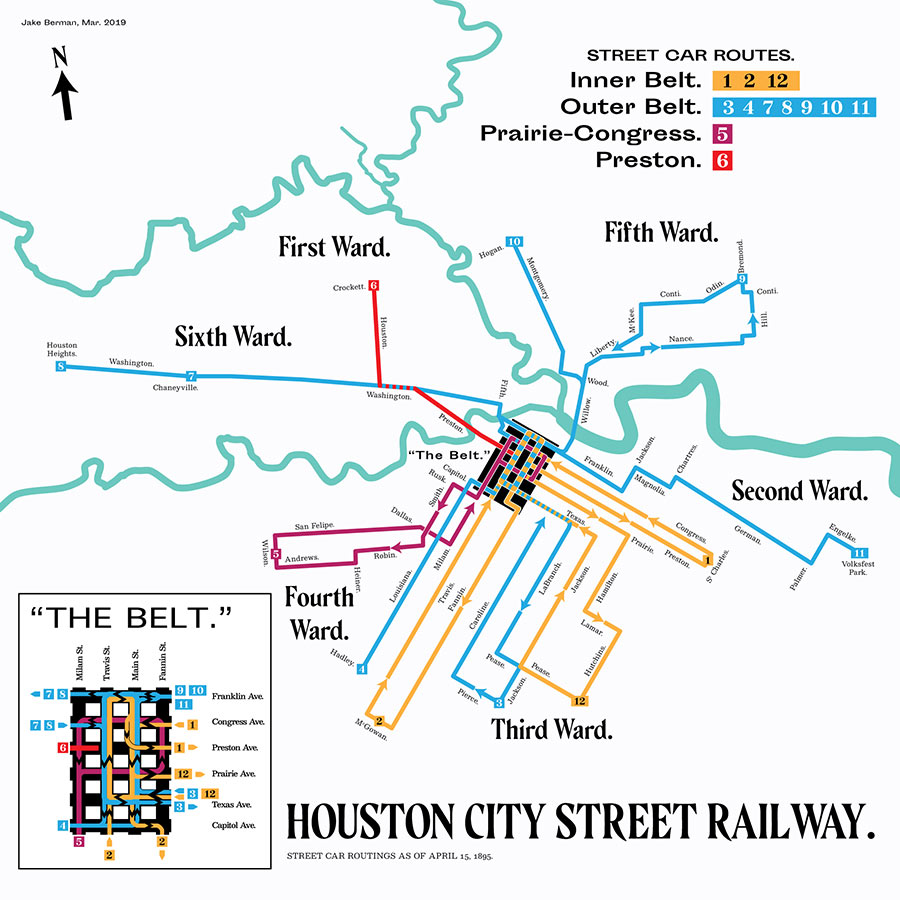
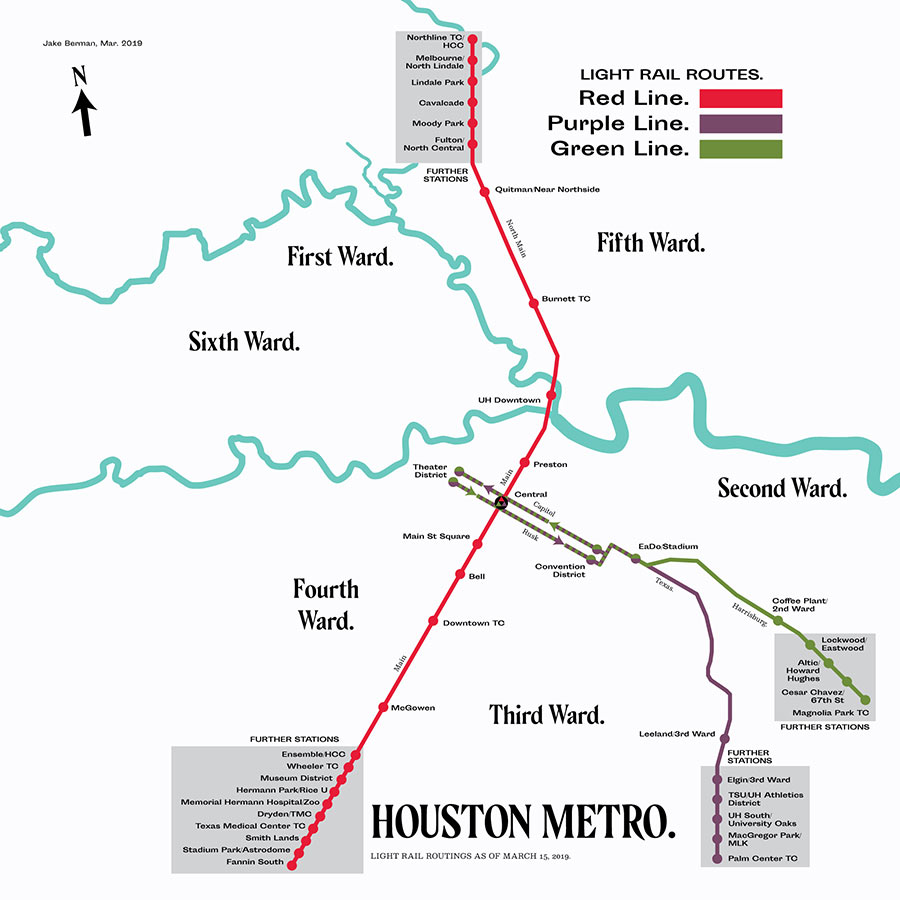
Here’s one way to make a graphic comparison of the tight-knit electric streetcar routes that crisscrossed tiny 1895 Houston (pop. 44,643) to today’s more spindly 22.7-mile light-rail network: Zoom way in, so that Buffalo and White Oak Bayous, not the more familiar target-like succession of looping freeways, appear as the major urban landscape feature — and stops in the Museum District and at UH line up at the edge of the frame like far-flung commuter suburbs. That’s the approach New York-based serial transit-system cartographer Jake Berman has taken in his latest in a series of now-and-then rail comparisons, also suitable for framing.
- Maps by Jake Berman [Fiftythree Studio] via Reddit
Maps: Jake Berman
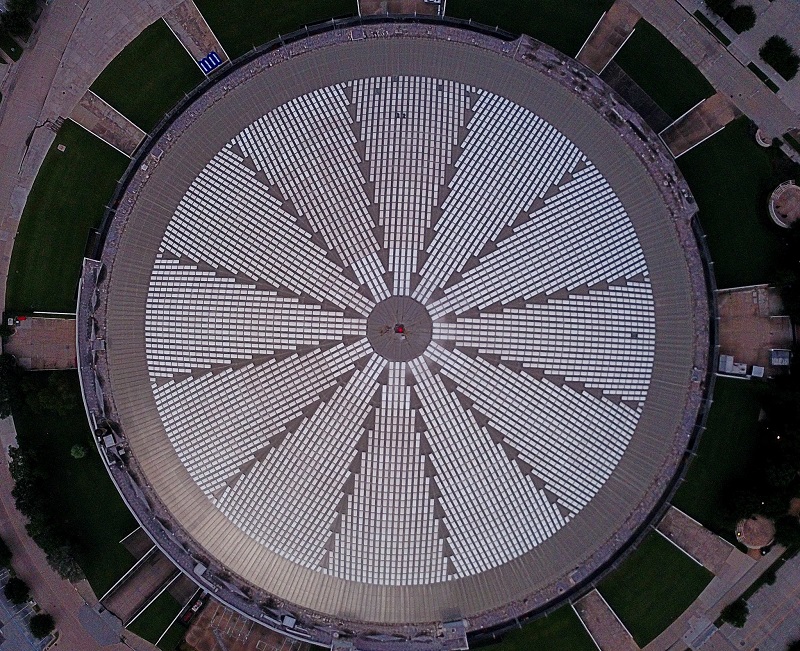
While hammering out the details of the Astrodome’s climate control system back before the building existed, members of the design team planned for some pretty bizarre weather not just outside it, but inside its 9.5-acre interior as well. According to I.A. Naman, whose firm designed the stadium’s air conditioning, “An experience had been reported previously regarding large dirigible hangars where unusual weather conditions were reported to have resulted in rainfall inside the hangar, even though it was not raining outside.” He wasn’t joking. “There was speculation that we might have such a situation in the stadium where fog, haze, self-generated turbulence in the nature of a tornado, cloud formations or even rain, might conceivably be experienced,” he wrote in 1966. “Was this something which really could happen or was it only a fear with no real basis?”
That the air inside the stadium would likely be filled with tobacco smoke made things even more complicated. If the smoke were to form a cloud of sufficient density, the engineers worried that it might obscure the audience’s view of what they came to see. “It was impractical to try to eliminate the smoke cloud entirely,” wrote Naman. So the question became: How much smoke could there be before the action on the field became too hard to follow? To find out, “A simple experiment was arranged,” he wrote. A few engineers sat down inside a sealed glass box. Outside the box, an attendant flicked on a color movie of a baseball game. Slowly and carefully, smoke was piped into the box until the engineers could no longer discern the game. A measurement was taken, indicating the maximum amount of haze a spectator could conceivably put up with. It became the target level that the design team strove to meet.
In order to reach it, they concluded:
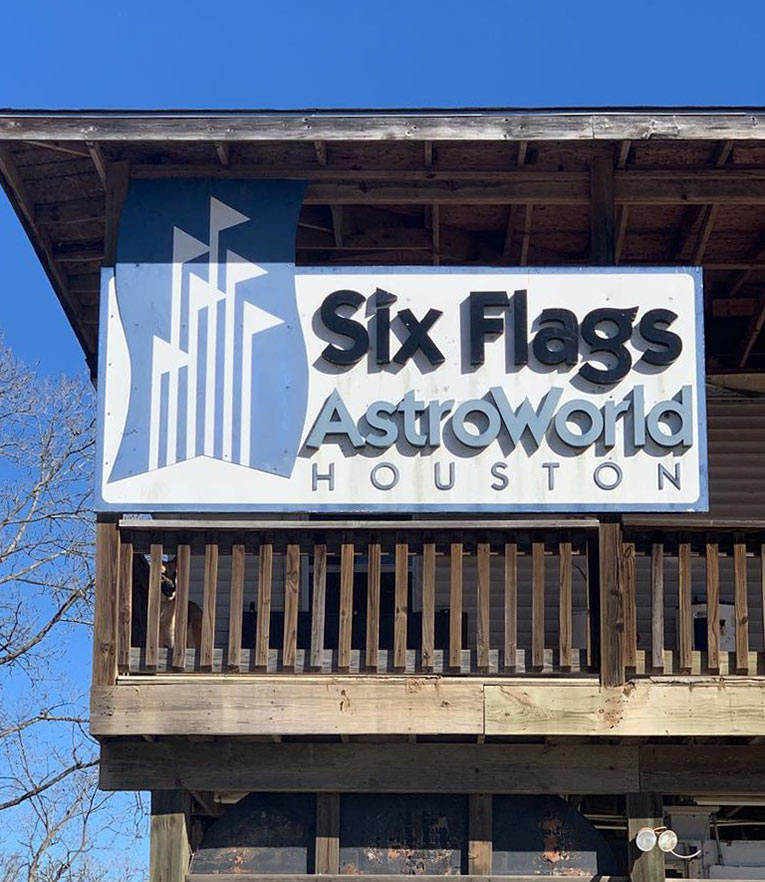
Local AstroWorld debris hoarder Maria Medeles has listed nearly 400 pieces of park merchandise including giant ride entrance decorations, fiberglass statues of cartoon characters, concession menu boards, bathroom signs, and other whatnots on an online auction portal where the current bids range up to $2,300 for the item pictured at top. It’s only a fraction of everything she’s got, though: According to the auctioneer she’s engaged to get rid of the stuff, the list of items available will at least double in the days leading up to February 23, when Medeles and SITE Auction Services plans to hold a live, in-person auction at Emiliano’s, a sports bar and pool hall at I-10 and Wayside with a fighting ring out back where frequent lucha libre matches go down.
What other goodies could be made available at the event 2 and a half weeks from now? Probably some considerably large props and signs, but also some more mundane memorabilia as well. According to KHOU’s Jason Miles, “Medeles’ Astroworld obsession began with buying a bench when the theme park closed in 2005.”
- New AstroWorld auction is your chance to own vintage entrance sign, Bugs Bunny and more [Houston Chronicle]
- Astroworld memorabilia auction features hundreds of items [KHOU]
Photo: SITE Auction Services

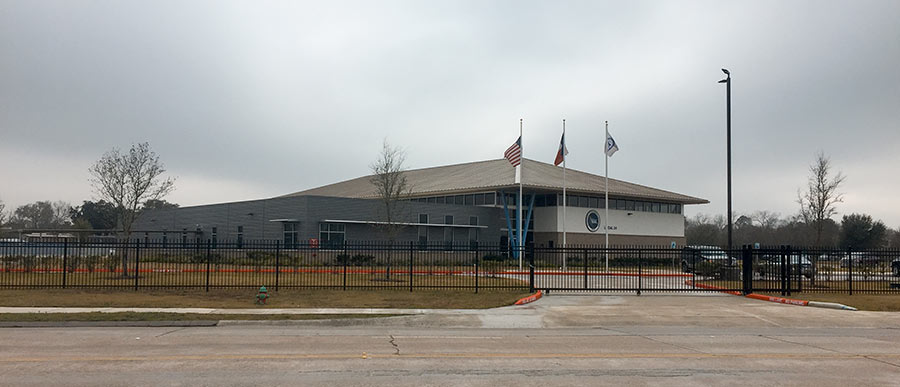
Probably the oldest thing hanging in the International Longshoremen’s Association Local 24 building in Pasadena is the 24-ft.-long mural shown at top, depicting — from left to right — the way black workers’ jobs at the Ship Channel evolved from the early 1900s to 1957 when the painting was completed. How the artwork made it from the banks of Buffalo Bayou to brand-new union building at 4060 Red Bluff Rd. is a story that spans about the same number of decades:
In the late ’50s, members of Houston’s black longshoremen’s union, I.L.A Local 872, commissioned an artist named John T. Biggers to paint something they could put on the walls of their meeting hall at 75th and Memphis St. Biggers — who after founding Texas Southern’s art department nearly a decade prior would go on to become one of the century’s most well-known black muralists — was pressed for time: “A UNESCO grant that I applied for two year earlier, to study traditional life in Africa, had come through. I was told be in Ghana by July 1, 1957 — three weeks away,” he recalled in a later interview. So he got to work like crazy in a studio at TSU, painting, “from 3 a.m. until classtime and after classes until midnight,” with the aid of sketches he’d made at the Port of Houston and the Ship Channel, writes historian Ollie Jensen Theisen. He met his deadline and turned over his work, History of the International Longshoremen’s Local 872, chronicles decades of history — from the heavy lifting of days past to a present moment in which a group union bosses foreground a few men on forklifts.
By order of a federal court in 1983, Local 872 merged with its whites-only counterpart Local 1723 to become Local 24. Biggers’ painting wound up in the second-floor auditorium of the new joint union’s building, which sits at 7811 Harrisburg Blvd. — between 78th and 79th streets — but received a demolition permit late last week.
Local 24 officials have already moved into their new home in Pasadena, completed following about 2 years of construction:
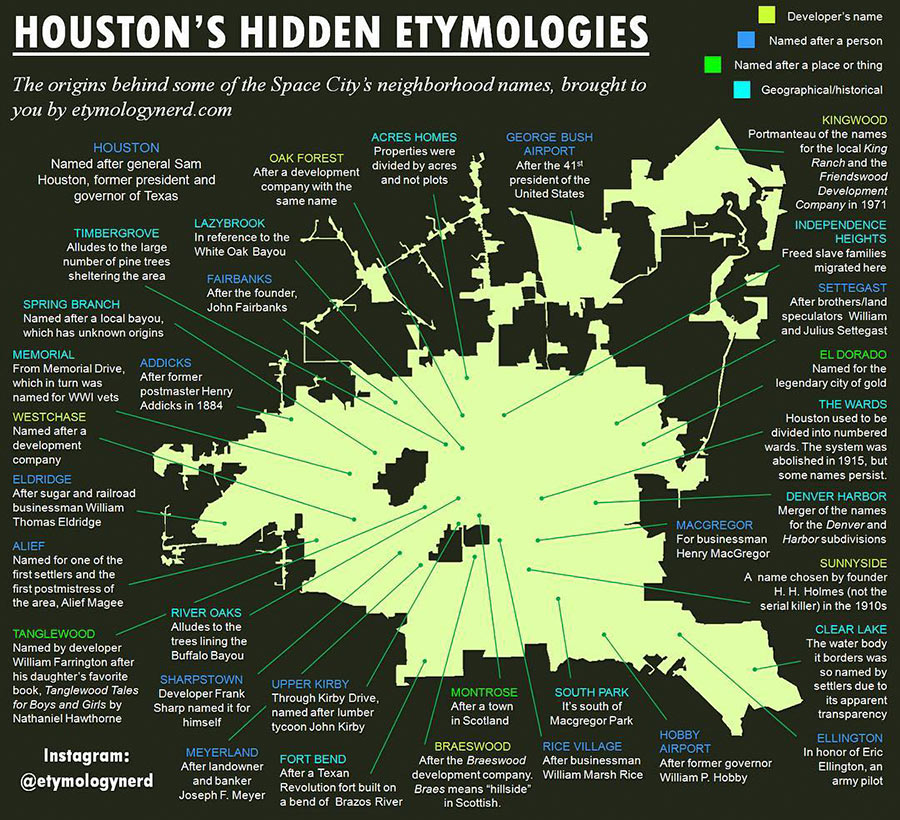
Budding internet etymologist and Albany High School senior Adam Aleksic is out with his latest annotated map (bigger version here), which points out the origins behind some of the Houston area’s most well-known neighborhood names. As you can see in the legend at the top right corner, the author makes a distinction between developers and people — both of which have left their marks in the region’s spacial vernacular. And of course, no map of Houston would be complete without its fair share of wet spots, too, which appear in the meanings behind 6 locations shown above: Lazybrook, Timbergrove, Spring Branch, River Oaks, Clear Lakes, and Denver Harbor.
- Infographics [The Etymology Nerd]
Image: The Etymology Nerd
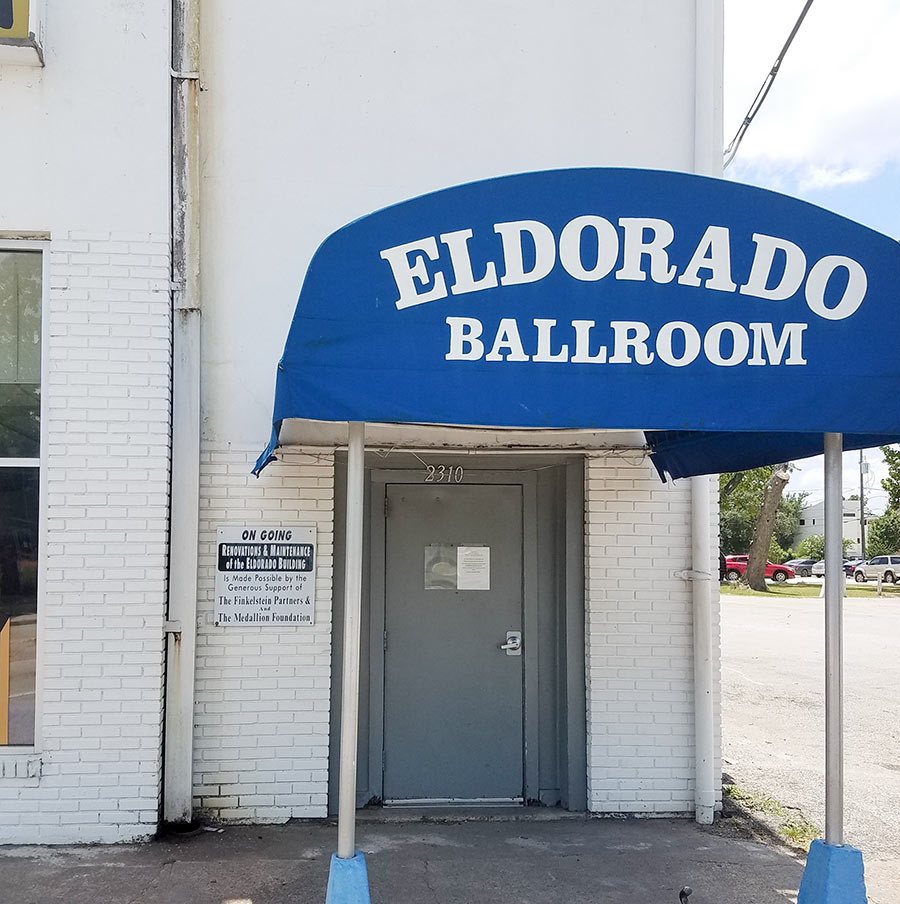

In a series of tweets yesterday, Leah Binkovitz over at the Urban Edge took viewers on a Google StreetView tour of the 9 Houston sites included in the spring 1956 edition of the Negro Travelers’ Green Book, the handy pre-civil-rights publication that, by its own description, existed to “give the Negro traveler information that will keep him from running into difficulties, embarrassments and to make his trips more enjoyable.” Too bad though, there wasn’t left much to see. Almost all the properties — home once to various hotels, motels, and restaurants — are vacant now.
New editions of the guide came out each year from 1937 to 1967, however, meaning a whole bunch of other Houston venues made the list at sometime or other. And, according to Craig Hlavaty at the Chronicle, at least 5 of them are still around, most notably, the art-deco Eldorado Ballroom pictured above at 2310 Elgin.
And perhaps less notably, the two-tone Ralston Discount Liquors #1 store on the corner of Lyons Ave. and Gregg St. formerly known as Ralston Drug Store:
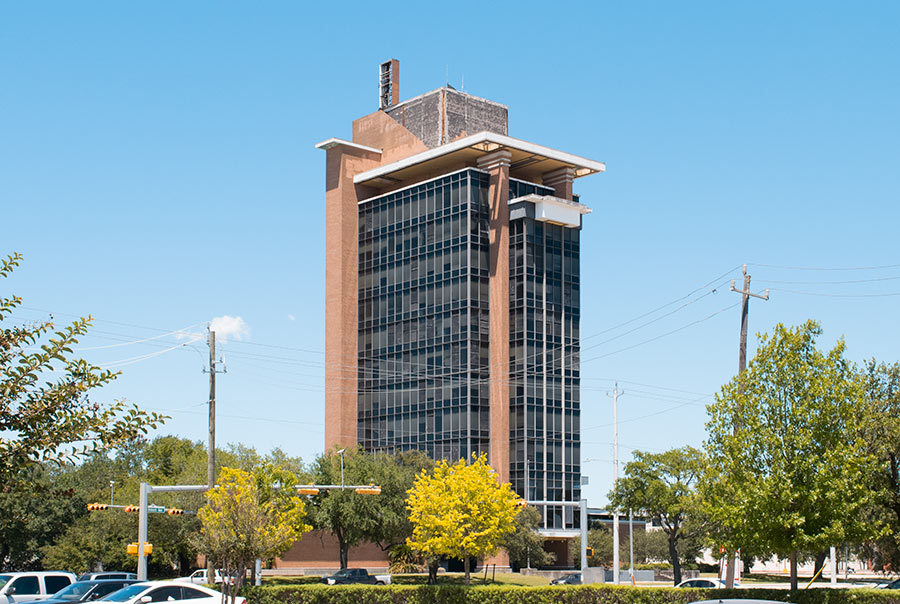
The new owner of Pasadena’s tallest empty building has 2 items on its agenda for the 1962 structure: air it out and tear it down. For nearly 2 decades, the 12-story office tower at 1002 Southmore Ave. — originally known as the First Pasadena State Bank building — has managed to get by untouched by those who want it gone. (It came this close to vanishing in 2005 when the city issued a demolition permit for it, but a new owner scooped it up before anything went down.) In June, the city filed a lawsuit demanding that the property owner demolish the tower or reimburse the city for taking matters into its own hands. The defendant did neither, and instead passed the building off in October to the Pasadena Economic Development Corporation — which, having secured financial help from Pasadena’s city council shortly after the sale closed — now plans to go through with the teardown.
It’ll cost about $2.5 million to get rid of structure, the private development group estimates, after having negotiated the terms of its demise with various demolition and asbestos abatement contractors. According to the PEDC’s meeting minutes following the purchase: “the roof leaks so badly that water has gone through the whole building.”
When Houston architectural firm MacKie & Kamrath designed it for what was to become the commercial center of Pasadena in the early ’60s, the challenge was to make something “that signalled the former Strawberry Capital of the World‘s transition into the era of manned spaceflight,” according to the Chronicle’s Lisa Gray. It became an icon in town — showing up on school report cards and in the logo for the city’s chamber of commerce — and beyond, as a notable waypoint between downtown Houston and NASA’s then-new manned spaceflight facility further south off I-45.
Looking from closer up, you can see the corner holes in the building’s cantilevered roof overhang:
COMMENT OF THE DAY: WHAT ELSE LEFT MIDTOWN WHEN RICHMOND AVE MET WHEELER ST.  “In addition to the Delman Theater, an adjacent retailer named the Delman Juvenile Shop was also destroyed. The popular 1950s children’s clothing store featured a behemoth machine, the “Shoe-Fitting Fluoroscope,†that zapped the kids’ feet with unshielded x-rays, ostensibly to make sure the new shoes were a correct fit. In reality, it was used as a babysitter while Mom shopped. I couldn’t wait to grow tall enough to actually peer down the metal tube to view my wiggling skeletal toe bones.” [Patsy Schillaci, commenting on Comment of the Day: The Delman Theater Lives On, on Google Maps] Photo of Delman Theater and adjacent retail: Predator [license]
“In addition to the Delman Theater, an adjacent retailer named the Delman Juvenile Shop was also destroyed. The popular 1950s children’s clothing store featured a behemoth machine, the “Shoe-Fitting Fluoroscope,†that zapped the kids’ feet with unshielded x-rays, ostensibly to make sure the new shoes were a correct fit. In reality, it was used as a babysitter while Mom shopped. I couldn’t wait to grow tall enough to actually peer down the metal tube to view my wiggling skeletal toe bones.” [Patsy Schillaci, commenting on Comment of the Day: The Delman Theater Lives On, on Google Maps] Photo of Delman Theater and adjacent retail: Predator [license]
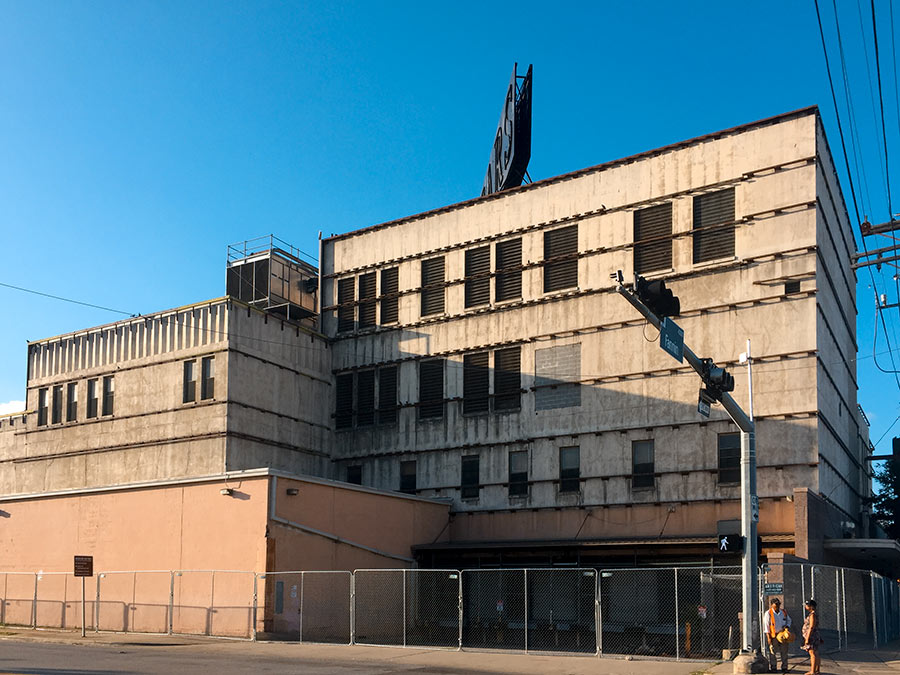
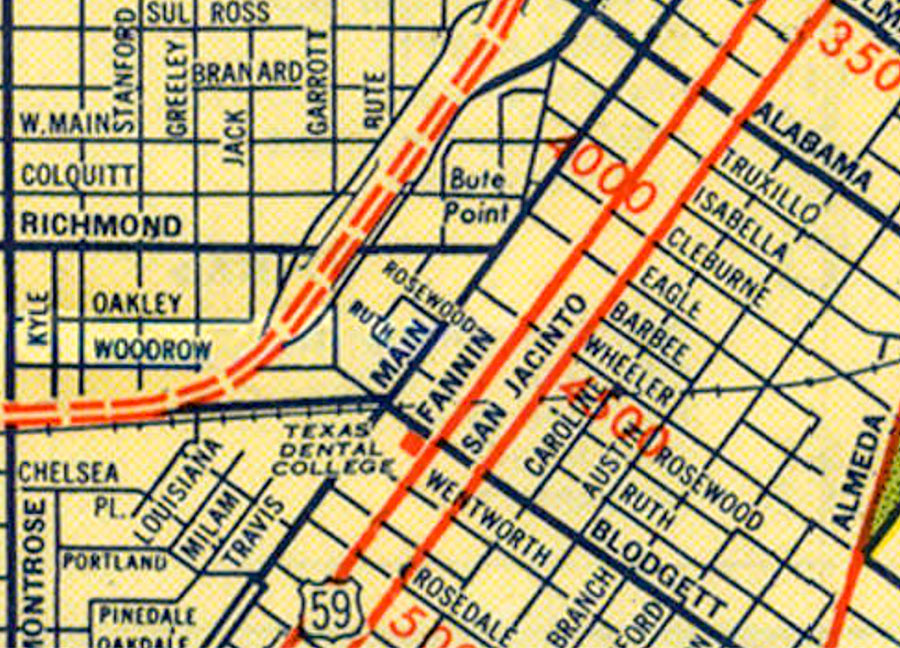
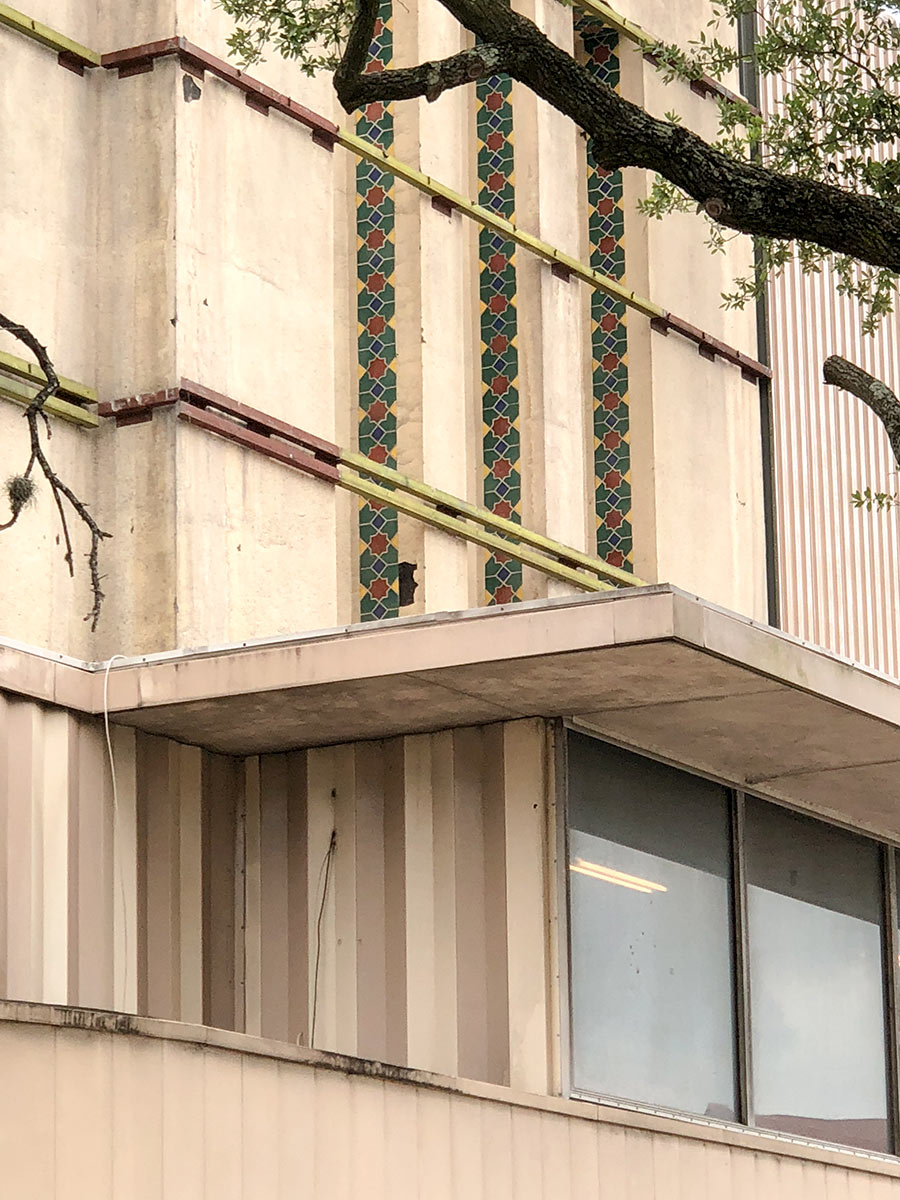
Ever notice that the Wheeler-Ave. side of the Midtown Sears (shown above) doesn’t quite jibe with the rest of the building? It’s become even clearer since all that beige metal cladding was stripped off the structure earlier this year. Upon its removal, the biggest revelations were cascading green, red, and blue art-deco tile mosaics (shown here) running from top to bottom on every side of the building, except the Wheeler one, where the array of facade openings pictured at top are a bit less architecturally refined despite their prominent positions overlooking crosstown traffic.
So, what gives? Well, it turns out that Sears’s south side wasn’t all that visible when the building opened in 1939. Back then, Wheeler was just a narrow side street off Main and did not flow directly into Richmond as it does now, explains Preservation Houston’s Jim Parsons. Richmond, a much larger thoroughfare, also dead-ended into Main St., across from the Sears and just north of where Wheeler began. You can see the missed connection in the 1950 street map above.
It wasn’t until the early 1960s that the 2 streets were joined through a partial annexation of the Delman Theater property at 4412 Main, catty-corner southwest of the Sears:

That’s 50 pounds of the city’s own name-brand organic fertilizer — dubbed Hou-Actinite — in the photo above. Every Houston resident gets the urge to help produce it sometimes through contributions to the municipal sewer system — which eventually arrive at one of the 2 largest treatment facilities in the city: the 69th St. Wastewater Treatment Plant off Clinton Dr. near Wayside and Buffalo Bayou, or the Almeda Sims plant near W. Orem Dr. and Sims Bayou. There, the raw material is heated until dry, sterilized, and ground into pellets of what the city calls “Class-A” product; in other words: top-shelf stuff. About 32,000 tons of it are made each year and shipped off to nurseries, as well as bulk agricultural buyers.
It’s nothing new; the city patented the process back in 1949:
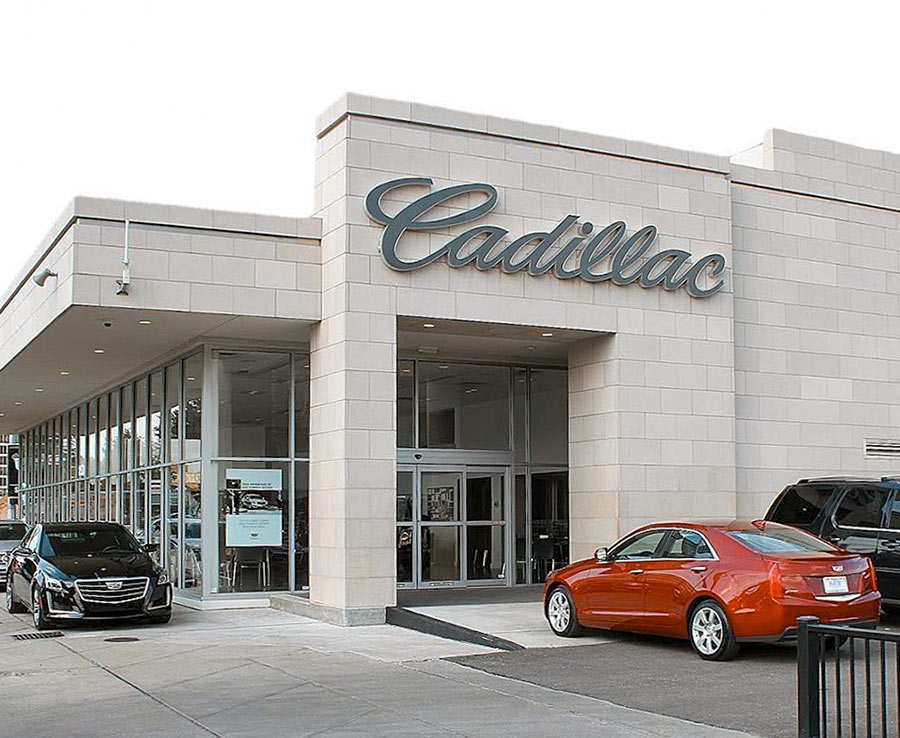
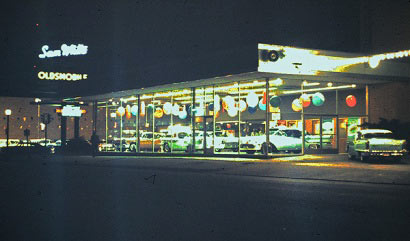
With the former Shelor Motor Company building at 1621 Milam St. all but doomed to meet the wrecking ball, historian Stephen Fox digs through some old Chronicle clips to remind us that there’s still a few other old car dealerships lurking down south in Midtown. Sure, they may not be as pedigreed as the ill-fated building to the north, but get this: One of them still sells cars! It’s Midtown Cadillac at the corner of Main and McGowen streets, shown at top. Architect Harvin C. Moore — the brains behind more than 84 homes in River Oaks, as well as Rice University’s chapel — designed it for Sam White Oldsmobile (pictured above), which opened inside in the early 1950s, according to Fox. Sam White and its successor Rice-Menger occupied the building until 1985. It’s been a Cadillac dealership since Don Massey took it over in 1999, followed by Stewart and then Central in 2012.
Catty corner to it, Midtown seafood spot REEF was originally a dealership, too. Built in 1952, the building opened as Smith Chevrolet Co.:
COMMENT OF THE DAY: PARSLEY STUDIOS’ BIKE LAB REDO COMES FULL CIRCLE 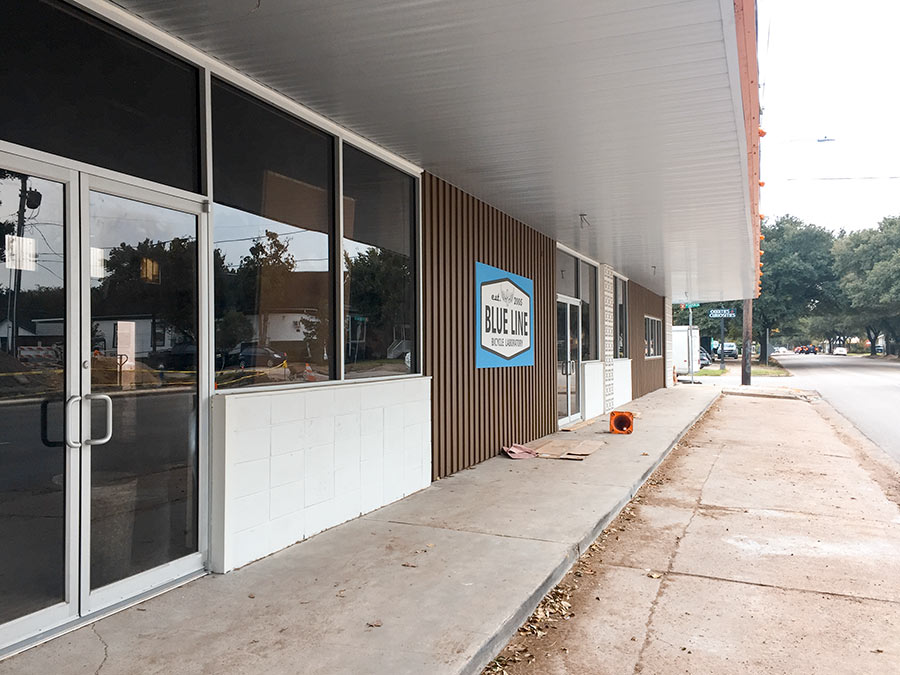 “Blue Line Bike Lab’s owners are brothers Fred and David Zapalac whose mother Patti Moore Zapalac graduated from Reagan High School in 1966 — actually had senior pictures taken at Parsley Photography!” [Patti Zapalac, commenting on Blue Like Lab Now Has Parsley Studios’ Former Yale St. Building Color-Coded] Photo of former Parsley Studios, soon-to-be Blue Line Bike Lab: Swamplox inbox
“Blue Line Bike Lab’s owners are brothers Fred and David Zapalac whose mother Patti Moore Zapalac graduated from Reagan High School in 1966 — actually had senior pictures taken at Parsley Photography!” [Patti Zapalac, commenting on Blue Like Lab Now Has Parsley Studios’ Former Yale St. Building Color-Coded] Photo of former Parsley Studios, soon-to-be Blue Line Bike Lab: Swamplox inbox
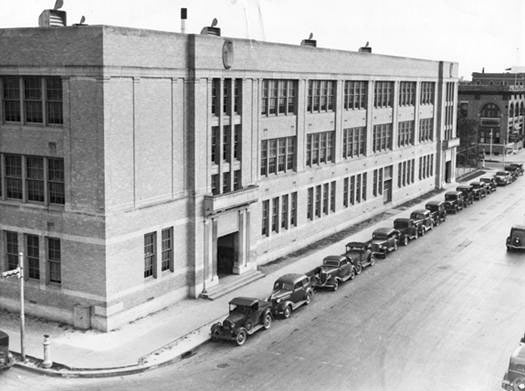
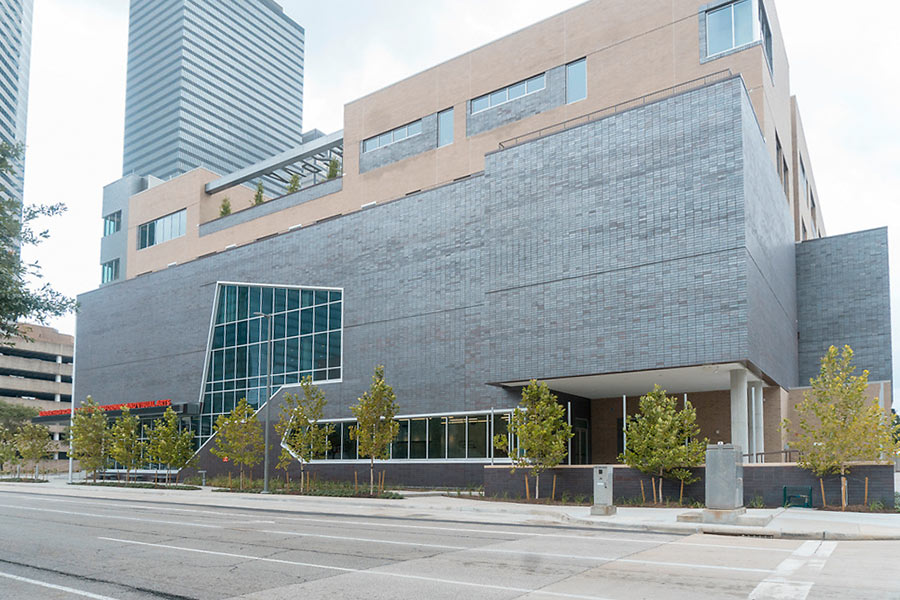
“Houston must have looked huge to Lyndon Johnson as he drove toward it across the flat Gulf plains in his battered little car,†writes Robert Caro in his biography of the former president. Johnson’s destination: Sam Houston High School (shown at top), which opened in 1921 in place of the even-older Central High School on the block bounded by Austin, Rusk, Caroline, and Capitol — the same spot where the new Kinder High School for the Performing and Visual Arts is now “90 percent complete,†according to Paper City’s Annie Gallay.
Hired to teach public speaking and coach the debate team, Johnson — writes Caro — promised his new principal he’d win the state championship. He didn’t, coming in second at the tournament in Austin. Still, Johnson had succeeded in making a name for himself among staff — who gave him a $100 raise and a contract for the next school year — and among the school’s 1,800 students — who jockeyed for enrollment in “Mr. Johnson’s speech class†during the following school year. By the end of LBJ’s first full year at Sam Houston, reports Caro, enrollment had increased from 60 to 110 new students.
AN OPENING-NIGHT BRAWL AT CAM STARTED WITH A FEW LOAVES OF BREAD 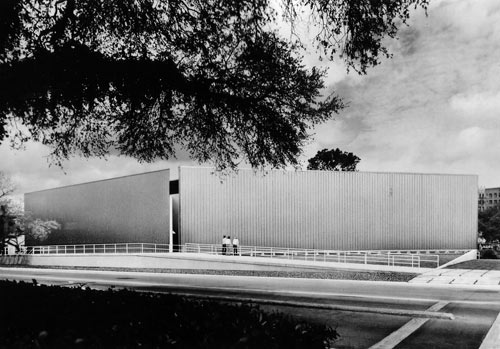 One highlight of Pete Gershon’s new book about Houston’s ’70s and ’80s art scene is his description of the all-out melee that erupted in the Contemporary Arts Museum’s upper gallery at the opening night of an exhibition put on by Spanish artist Antoni Miralda in 1977. Notorious for his work with food, Miralda, writes Gershon, had “hung color photographs of brightly hued macaroni, labeled huge mounds of salt and sugar with garishly flashing neon signs, and showed videos . . . of food being prepared and eaten in restaurants from around Houston.” The centerpiece was “four thousand loaves of bread dyed with food coloring” which performers placed “on a 175-foot row of benches bisecting the exhibition space.” Following some nibbling and “the playful tossing of slices,” one “notorious troublemaker from the St. Thomas art crowd,” picked up a loaf and chucked it carelessly, hitting a 6-year-old girl and knocking her to the ground. A fellow attendee dragged him out the back entrance to teach him a lesson, but it was too late: “inside the gallery the scene quickly escalated to a full-scale, Texas-sized donnybrook, with flying bread and flying fists.” Fifteen minutes later, management had cleared the room “and mopped up the blood,” adds the museum’s then-director. But his boss worried about the mark it’d left — not just in the minds of those who disapproved but, worse, the ones who “eagerly entered the fray.” Perhaps, writes Gershon, “they thought this happened at CAM all the time.” [Arts and Culture Texas; interview with Pete Gershon] Photo: Contemporary Arts Museum Houston
One highlight of Pete Gershon’s new book about Houston’s ’70s and ’80s art scene is his description of the all-out melee that erupted in the Contemporary Arts Museum’s upper gallery at the opening night of an exhibition put on by Spanish artist Antoni Miralda in 1977. Notorious for his work with food, Miralda, writes Gershon, had “hung color photographs of brightly hued macaroni, labeled huge mounds of salt and sugar with garishly flashing neon signs, and showed videos . . . of food being prepared and eaten in restaurants from around Houston.” The centerpiece was “four thousand loaves of bread dyed with food coloring” which performers placed “on a 175-foot row of benches bisecting the exhibition space.” Following some nibbling and “the playful tossing of slices,” one “notorious troublemaker from the St. Thomas art crowd,” picked up a loaf and chucked it carelessly, hitting a 6-year-old girl and knocking her to the ground. A fellow attendee dragged him out the back entrance to teach him a lesson, but it was too late: “inside the gallery the scene quickly escalated to a full-scale, Texas-sized donnybrook, with flying bread and flying fists.” Fifteen minutes later, management had cleared the room “and mopped up the blood,” adds the museum’s then-director. But his boss worried about the mark it’d left — not just in the minds of those who disapproved but, worse, the ones who “eagerly entered the fray.” Perhaps, writes Gershon, “they thought this happened at CAM all the time.” [Arts and Culture Texas; interview with Pete Gershon] Photo: Contemporary Arts Museum Houston

